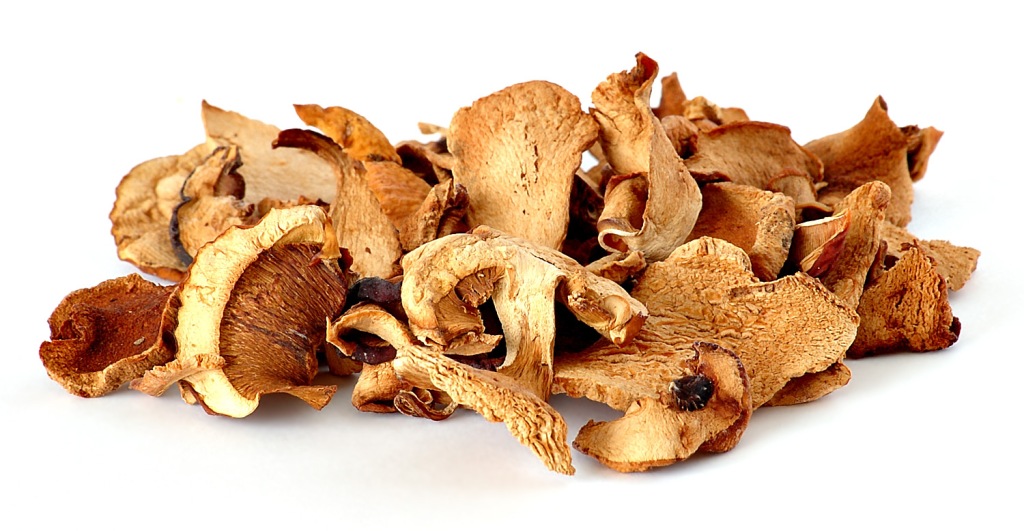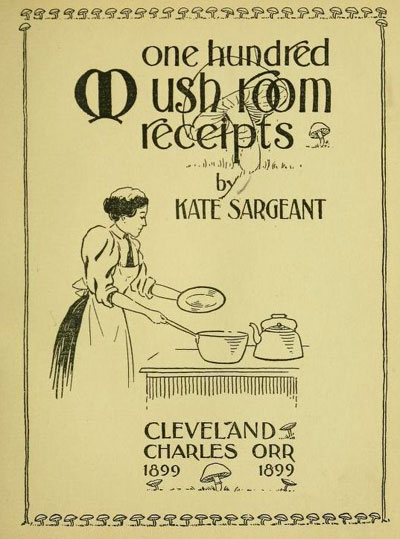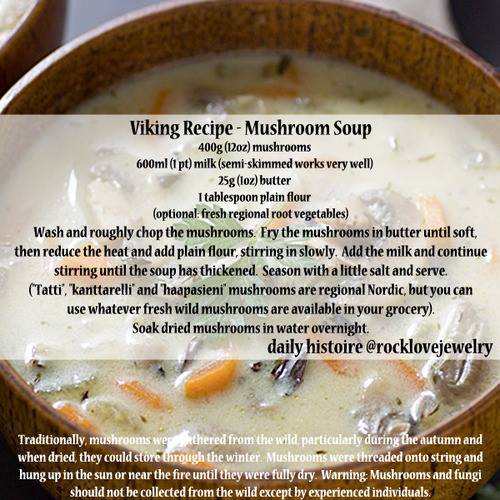Quick breakdown on the odds that were stacked against us humans enjoying the delicacies of the mushroom:
50% are inedible (gross, woody, not good eats – like eating bark and leaves)
25% “edible, but not incredible” (no flavor)
20% will make you sick (mild indigestion, nausea, 3-5 day sickness at most)
4% will be tasty to excellent (why we love mushrooms)
1% can kill you (dead dead)

“Mycophagy /maɪˈkɒfədʒi/, the act of consuming mushrooms, dates back to ancient times. Edible mushroom species have been found in association with 13,000 year old ruins in Chile, but the first reliable evidence of mushroom consumption dates to several hundred years BC in China. The Chinese value mushrooms for medicinal properties as well as for food. Ancient Romans and Greeks, particularly the upper classes, used mushrooms for culinary purposes. Food tasters were employed by Roman Emperors to ensure that mushrooms were safe to eat.
Mushrooms are also easily preserved, and historically have provided additional nutrition over winter.
Many cultures around the world have either used or continue to use psilocybin mushrooms for spiritual purposes as well as medicinal mushrooms in folk medicine.”
Source: Wikipedia.com
“Mushrooms are of the fungi family subdivision of Basidiomycotina, of the class Hymenomycetes. The word mushroom is derived from the Gallo-Roman mussiro which evolved to mussereroun in Middle English…In the eighteenth century, France began cultivating mushrooms resembling the basic mushroom that we all buy at the market.
Prior to 1940, the most widely available mushroom was the Italian brown, now known as the crimini mushroom. From this early lust for fungi arose the taste for more exotic mushrooms, including shiitake, enoki, oyster, morels, cepes, chanterelles, and more.”
Source: Homecooking.about.com

“Mushrooms are often lumped into the vegetable category, though most of us know that they are actually a fungus. Today the most commonly consumed variety is the button mushroom, or Agaricus bisporus, which makes up about 40 percent of the mushrooms grown around the world. The name “mushroom” has been given to over 38,000 varieties of fungus that possess the same threadlike roots and cap. These threads, sometimes referred to as “gills,” are responsible for giving mushrooms like portobellos their meaty taste and texture. As air passes through the threads moisture evaporates, giving the mushroom a rich heartiness you can really sink your teeth into.”
“A great deal of the mystery surrounding mushrooms stems from their association with poisonings and accidental deaths. The famous French philosopher Voltaire was once quoted as saying, “A dish of mushrooms changed the destiny of Europe.” He was referring to the War of Austrian Succession that followed the death of Holy Roman Emperor King Charles VI. The king’s untimely demise may have been a result of eating amanita, or “death cap,” mushrooms. On the other hand, mushrooms have also been praised for their medicinal properties thanks to their heavy dose of protein, potassium and polysaccharides, which contribute to healthy immune function.”
“Though we may associate hallucinogenic mushrooms with the culture of the 1960s, archaeological evidence suggests that these types of mushrooms served religious and spiritual purposes centuries earlier. Siberian shamans and Vikings are believed to have consumed hallucinogenic fly agaric (Amanita muscaria) mushrooms during religious ceremonies. According to the Mixtec Vienna Codex (13-15 centuries AD), mind-altering mushrooms were used in religious ceremonies in ancient Mexico. Roman Catholic priests also observed and recorded the consumption of hallucinogenic mushrooms by native peoples after the conquest of Mexico in 1519. After the effects of the mushrooms had worn off, the natives would discuss their visions of the future. We now know that these effects were not caused by magic, but rather by the psilocybin and psilocin found in some mushrooms. For centuries relatively little was known about mushrooms, and for a long time the Eastern half of the world was considered mostly mycophilic, and the West mycophobic. This all changed when the French introduced mushrooms into their haute cuisine. It wasn’t long before the rest of the world began to embrace the mushroom. By the late 19th century, Americans were cooking up mushrooms in their own kitchens. Prior to this time, mushrooms were mainly reserved for use in condiments. Inspired by the French, Americans took mushrooms to a whole new level of devotion. Clubs dedicated to foraging, identifying and cooking various varieties of fungi began popping up all over the country. ”
As America’s interest in mushrooms grew, entire cookbooks were devoted to them. One of the first English language mushroom cookbooks is Kate Sargeant’s One Hundred Mushroom Receipts (1899). Sargeant’s work includes some fabulous Harry Potter-sounding recipe titles including “Coprinus Comatus Soup (Shaggy Mane),” “Lepiota Procera Stew,” and “Baked Tricholoma Personatum.” In the book’s introduction, Sargeant describes the changing American attitude towards mushrooms at the turn of the century:
The general opinion in this country regarding mushrooms has been, that with one or two exceptions, all forms of fungus growth are either poisonous or unwholesome, but it is very gratifying to observe the change that is rapidly taking place in the public mind. Soon public opinion will acknowledge that it is an established fact that the great majority of the larger funguses, especially of those that grow in fields and other open places, is [sic] not only wholesome but highly nutritious.
– Kate Sargeant, One Hundred Mushroom Receipts (1899)
“Some of the earliest American mushroom recipe preparations were for mushrooms baked on toast in cream sauce. In Studies of American Fungi (1911), Sarah Tyson Rorer suggests baking the mushroom under a glass bell. The bell was then lifted at the dinner table so that “the eater may get the full aroma and flavor from the mushrooms.” I’ve posted two recipes from the book below.
I definitely recommend checking out a direct link to the post quoted above at pbs.org Also, the author of the post is a culinary historian, I think I got lost on her page for an hour: The History Kitchen.
And to finish it all off, a few of the ancient and old mushroom recipes I’ve found. The last two are from the book above, One Hundred Mushroom Receipts.
12 oz mushrooms
1 pt milk
1 oz butter
1 tbs flour
fresh, regional root vegetables (optional)
Wash and roughly chop mushrooms. Fry in butter until soft, reduce the heat and add the flour, stirring slowly. (Add all the other vegetables as well.) Add the milk, continue stirring until thickened. Season with a little salt and serve. “Tatti”, “kanttarelli” and “haapasieni” are the regional Nordic mushrooms if you want to make it super authentic.
NOTE: If using dried mushrooms, soak in water overnight (I usually use some of the water for flavouring in the soup, recipe does not specify).

Boletus Rex-Veris
Fried Boleti
Mushrooms
1 egg, whisked
3 crackers worth of crumbs
4 tbs. butter
salt & pepper
Peel the wooly cap, cut off the stems, cut in small pieces, dip in egg and cracker crumbs and fry in hot butter, seasoning to taste.

Shaggy Parasol Mushroom
Lepiota Procera Omelette (Parasol Mushroom)
6 eggs
1 cup (ish) Agaric mushrooms
2 ounces butter
1/2 cup milk (ish)
salt & pepper
Mince some young, fresh agarics; season with pepper and salt, add butter and set them in the oven while you whisk six eggs. Add two ounces of butter to frying pan, heat until it begins to brown; having again beaten the eggs, add three tablespoons of agarics, and a little milk. Pour lightly into the boiling butter; stir one way, and fry on one side for only five minutes. Drain from fat, roll up and down and serve quickly on a hot, well-covered dish.
I learn with my readers as I research these posts, so if anyone has any questions please let me know! If I can find the answer, there will be an article waiting for you. I think for my next history segments I want to get into the history of medical use in China, and the history of use as a hallucinogen throughout ancient cultures.
Kadet Kat


